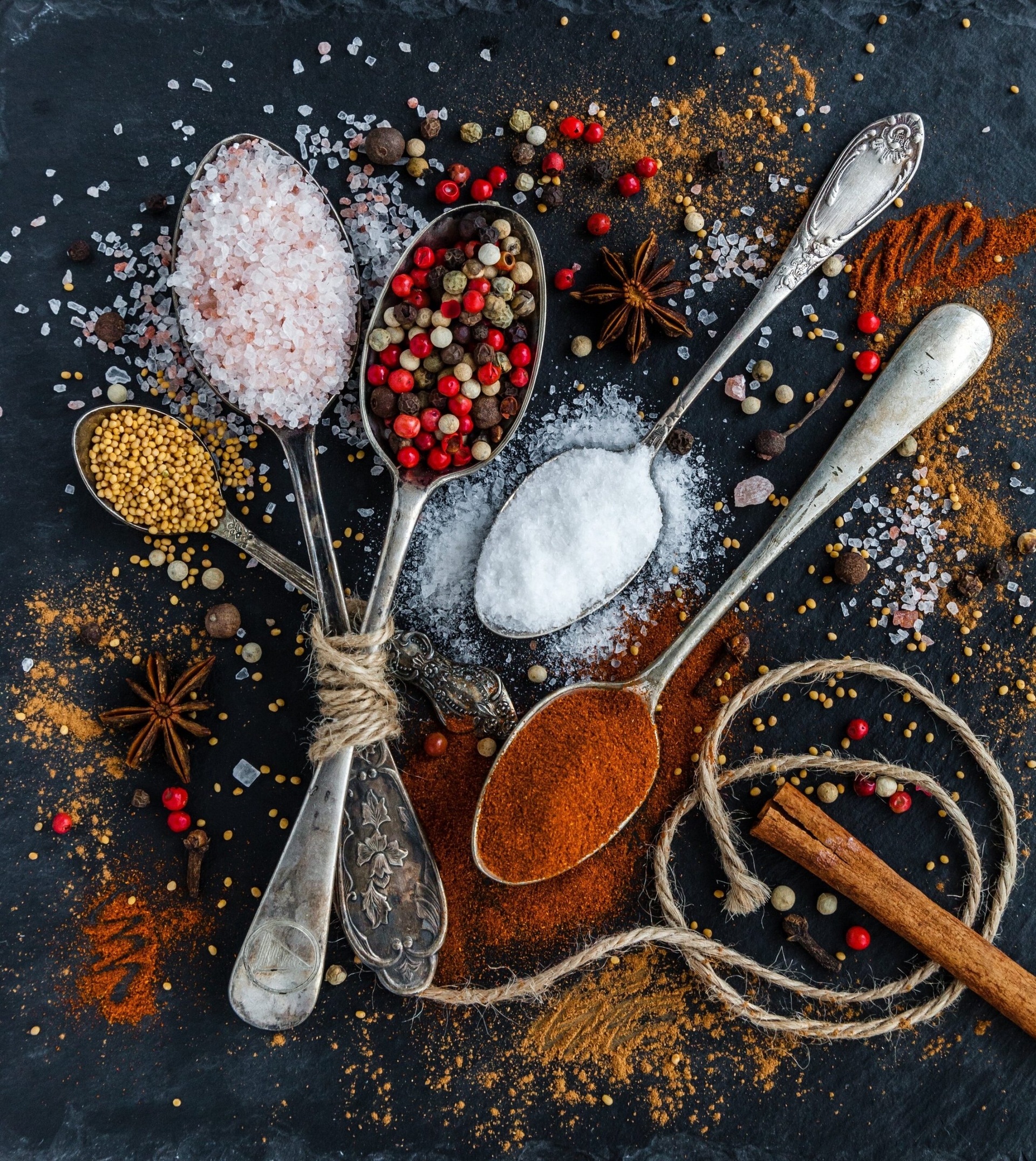If you find yourself making more food for your household these days, why not experiment with a few new combinations that you might not otherwise? There is a world of spice out there that we so infrequently explore as we slide into the habit of our typical staples. As an added bonus, some spice that may heretofore be unknown to your pantry can actually contribute to your stress management. We’ve been using spices for about as long as we’ve been using fire and the added flavoring wasn’t just to please the palate.
Our sense of taste was always meant to guide us toward foods that incurred the greatest benefit. We love dishes that are full of well balanced textures and seasonings because they’re typically healthy for us. An array of herbs on grilled meats can help dampen the potential pro-inflammatory compounds that form during high heat cooking. Cinnamon has been used to ease the blood glucose response after eating a high carb meal. A combination of quality herbs and spices will bring flavor and potential healing or positive regulatory effects on your health.
Here are a few flavor combinations that are honored by world cuisines and some of the positive health effects from using them:
West Africa
This part of the world often combines nutmeg, ginger, curries, adobo, and peanuts in their dishes. One of my all time favorite recipes is West African peanut curry. What’s great about curries is that as long as you have a good broth base, you can get creative with the meats and veggies that go along with it. Fresh ginger really livens up the flavor profile and packs a powerful anti-inflammatory and immune benefiting response. A compound in ginger, called “6-gingerol” has even been found to inhibit angiogenesis, or the growth of blood vessels, to cancerous cells.
Peru
Our next stop on our spice tour takes us to the shores of South America. Common in Peruvian cuisine are herbs and spices like coriander, aji pepper, basil, parsely, cilantro, and a wide array of chilies. Try this easy Lomo Saltado dish next time you want to shake up your stir-fry, although it’s highly advisable you replace vegetable oil with avocado or a grass-fed, animal-based cooking fat. Peppers, and their spice derivatives like paprika, have an abundance of an organic compound called carotenoids which have well known anti-inflammatory properties and can aid in eye health. If you’re consuming a dish with heavy chili influence, you want to make sure there’s a good fat source to go along with it. These compounds must be dissolved in fats to be usable by the body.
Mediterranean
Our final stop brings us to the shores of the Middle East where one diverse spice blend has been used for centuries to spruce up an odd hummus or grilled meat. Za’atar is typically a blend of herbs like oregano, sumac, marjoram, and thyme and has a complex enough spectrum of flavor that you can use it on things from yogurt dips to pita spreads to all sorts of chicken dishes. It pairs extremely well with flavors like lemon juice, olive oils, and coriander. This spice blend can aid in clearing out mucus-filled respiratory tracts and aid in blood circulation, potentially enhancing cognition. Za’atar is often sold pre-blended like curry powders.
While we can get into the weeds of all the arrays of positive physiological effects of herbs and spices, at the end of the day, the more rich and flavorful our dishes are, the greater the chances we’re going to see a benefit from taking a little extra time to blend in that extra touch of variety.
What are your go-to spice combinations?
Marcus Farris is the Veteran Wellness Coordinator at Mission 22. He’s a Certified Health Coach and Level 1 Crossfit Trainer.

